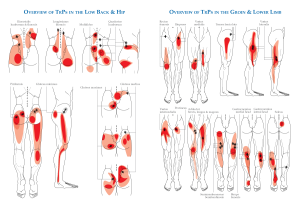Treating Back Pain That Comes In Waves

Category: | Author:
Back pain presents in many different forms, and one way that people sometimes describe their pain is that it seems to come and go in waves. Pain that keeps returning at semi-regular intervals can seriously affect your ability to live a normal life, so what’s causing your discomfort, and moreover, what can you do to treat it? In today’s blog, we take a closer look at some back conditions that can present in waves, and we discuss your treatment options.
Back Pain Comes In Waves
Interestingly, the most common issue that develops as a pulsing, wavelike discomfort in your back area isn’t actually caused by an issue with your spine. Wavelike back pain is commonly used to describe discomfort as a result of the presence or passage of a kidney stone. These small kidney stones can cause severe back pain, and the discomfort tends to start below your ribcage and seemingly travel downwards towards your butt. You may deal with significant discomfort, then notice hours of relief before another wave hits you. If this describes your experience, contact your primary care physician or another healthcare provider to learn about the best way to manage a kidney stone.
It’s also possible that your wavelike back pain could be caused by an issue in your spine. While it’s not typically described as wavelike, spinal nerve compression is an issue that usually gets better with certain actions and worsens with other activities. For example, it can feel like your pain is coming in waves when actually a specific action like sitting, standing or walking is causing nerve irritation and an increase in symptoms. If certain activities are bringing waves of symptoms, consider talking with a spine specialist and letting them know which activities cause discomfort and which ones help symptoms resolve.
Depending on the location of your nerve issue, you could be dealing with:
- Bulging Disc
- Herniated Disc
- Spinal Stenosis
- Sciatica
All of these conditions are caused by compression, irritation or damage to vital spinal nerves, and while treatment tends to be somewhat similar, it’s best to get an individualized diagnosis so that a personalized treatment plan can be developed.
In most cases, doctors will work to resolve the nerve discomfort with the help of a combination of conservative techniques. Low-impact exercise, stretching techniques, physical therapy, posture improvements, activity modification and short-term rest can all help to take pressure off the nerve and gradually restore normal movement in the area so that the nerve can travel unimpeded. Most patients see enough improvement with these conservative techniques that additional care is not required.
If you are not seeing an improvement in symptoms or your discomfort has worsened despite your best efforts, your spine specialist may recommend a minimally invasive procedure. There are a few different ways the nerve can be addressed, but the goal of any procedure will be to decompress the affected nerve. This may be achieved by widening the spinal foramen, debriding bone spurs or removing part of a herniated disc, depending on your needs. All of these procedures have a high rate of success, but doctors will try to resolve the issue with conservative methods first because all surgeries carry additional risks.
If you’ve been dealing with wavelike or chronic back pain and want to put an end to it once and for all, reach out to Dr. Sinicropi and the team at The Midwest Spine & Brain Institute today at (651) 430-3800.
Related




